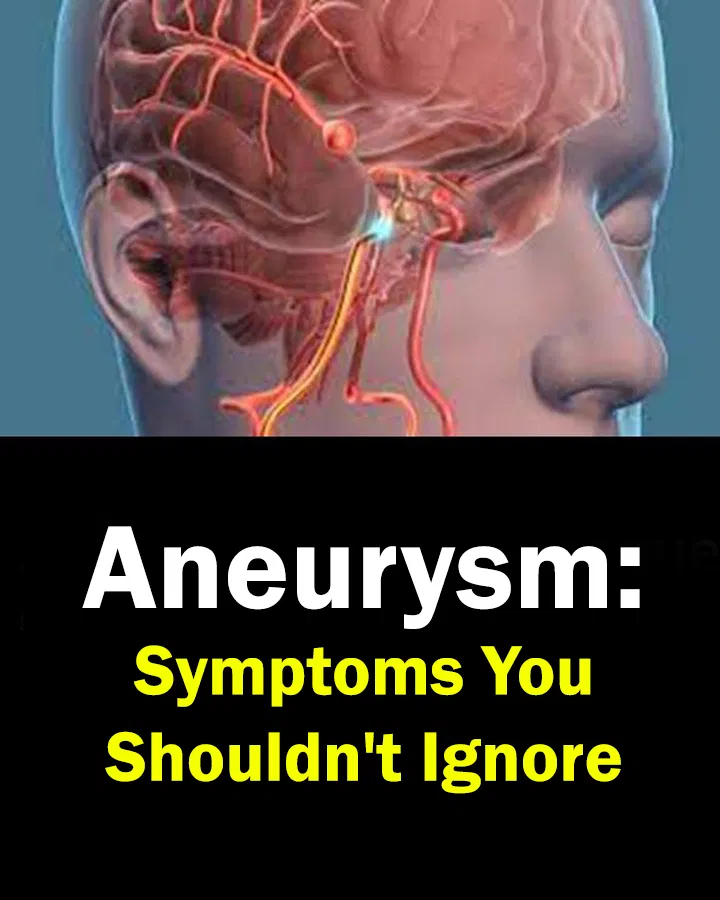A vital component of the family’s overall wellbeing is brain health. A disaster can be avoided by recognizing warning signals and promptly seeking medical assistance. Any age can be affected by a brain aneurysm, and being aware of its signs is crucial to acting quickly.

What is an aneurysm in the brain?
When the wall of a blood vessel in the brain weakens and a bubble forms, it might result in a brain aneurysm. A cerebral bleed could result from this bubble rupturing or staying stable. The location and size of the impacted vessel determine how severe the illness is.
Internal bleeding in the brain that happens when the aneurysm bursts can be lethal or seriously damaging. Even an unruptured aneurysm, though, has the potential to press against brain structures and result in severe symptoms.
Anxiety is the primary symptom.

According to survivors with brain aneurysms, a severe and abrupt headache was one of the primary symptoms before to the rupture. Although it can be difficult to distinguish between an aneurysm and a migraine, certain traits may point to a higher risk:
severe headache, referred to as the most excruciating headache of one’s life;
migraines with a sudden onset and no prior history, along with additional neurological symptoms.
Get medical help right away if you or a loved one is experiencing an odd headache.
Additional signs of a brain aneurysm

A sudden, intense headache is just one of several symptoms that could point to an aneurysm. Keep an eye out for the following signs:
Sudden eyelid drooping; double or confused vision; unexpected seizures; one-eye pain; unexplained nausea and vomiting; stiff neck; extreme light sensitivity; partial facial numbness; ringing or loud noises in the head; and momentary unconsciousness
Take someone to the hospital right away if they exhibit one or more of these symptoms.
Risk factors for aneurysms in the brain
Some persons have a higher risk of brain aneurysms because of lifestyle choices or hereditary factors. Among the primary risk factors are:
Smoking, excessive alcohol use, high blood pressure, a family history of brain aneurysms, and drug use, including cocaine
Cardiovascular disease and high cholesterol; genetic disorders that impair blood vessels
Discuss preventive actions with your doctor if you have one or more of these risk factors.
How does a diagnosis get made?
Physicians utilize imaging studies like these to verify the existence of an aneurysm:
Brain angiography: A more precise test to see aneurysms; magnetic resonance imaging (MRI): Provides information about blood arteries; and computed tomography (CT): Identifies brain hemorrhage.
The doctor will recommend the appropriate examination for each instance if an aneurysm is suspected.
Treatment options
The aneurysm’s size, location, and rupture risk all affect the course of treatment. Among the options are:
1. Observation
The doctor might just advise routine monitoring to track the aneurysm’s course if it is minor and low risk.
2. Surgery
Surgical clamping: Using a clip to seal the aneurysm through a skull hole.
Endovascular embolization: A minimally invasive technique that stops blood flow by inserting coils into the aneurysm.
The neurosurgeon determines the kind of intervention based on the patient’s condition.
How can a brain aneurysm be avoided?
While an aneurysm cannot always be prevented, there are steps that can help lower the risk:
A balanced diet and regular exercise can help control blood pressure. Smoking and excessive alcohol use should be avoided. Stress should be reduced, and relaxation should be sought. Maintain current medical examinations, particularly if there is a family history.
